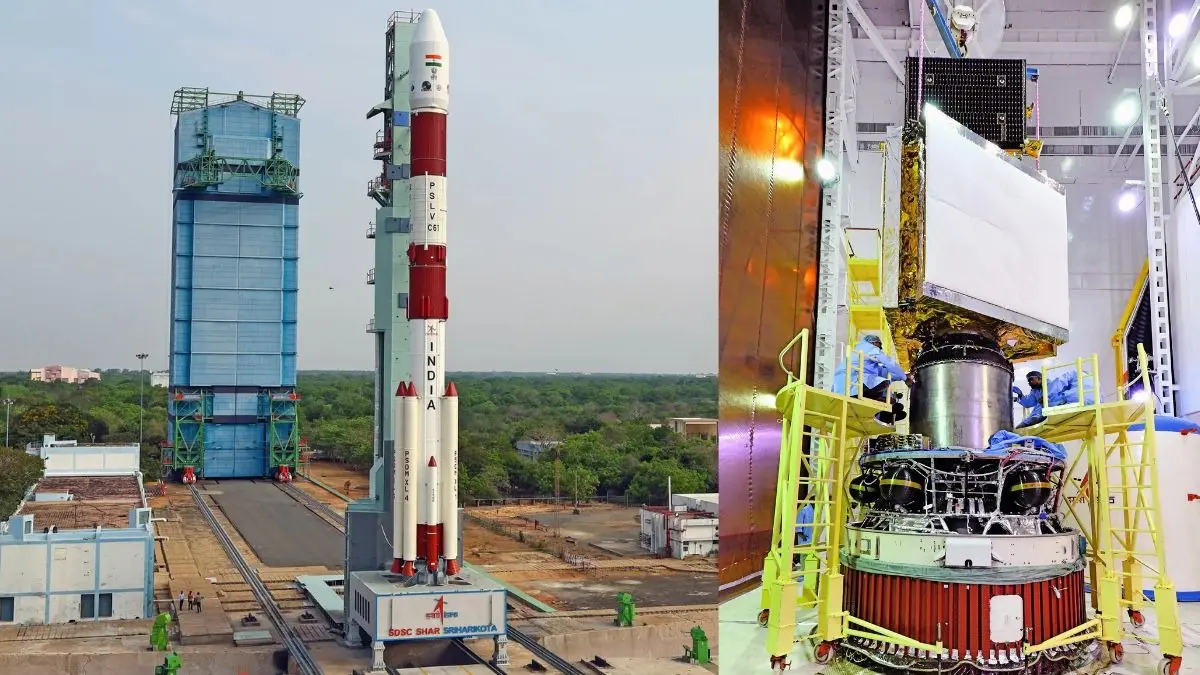Updated 18 May 2025 at 11:52 IST
What Was ISRO’s PSLV-C61 EOS-09 Mission All About, That Could Not Be Completed Successfully?
ISRO’s PSLV-C61 EOS-09 Mission: India’s latest space mission, the PSLV-C61, carrying the EOS-09 satellite, could not be completed successfully, as announced by the Indian Space Research Organisation (ISRO).
- Science News
- 3 min read

ISRO’s PSLV-C61 EOS-09 Mission: India’s latest space mission, the PSLV-C61, carrying the EOS-09 satellite, could not be completed successfully, as announced by the Indian Space Research Organisation (ISRO).
The launch took place on Sunday from the Satish Dhawan Space Centre (SDSC), SHAR, but faced an issue during the third stage of the rocket’s flight.
What Went Wrong?
ISRO Chief V. Narayanan confirmed the failure at a press briefing. He stated, “Today, we attempted a launch of the PSLV-C61 vehicle. The vehicle is a 4-stage vehicle."
"The first two stages performed as expected. During the 3rd stage, we are seeing observation. The mission could not be accomplished. We are studying the entire performance; we shall come back at the earliest," he said.
Advertisement
The third stage of the rocket, which is a solid rocket motor, is responsible for giving the satellite a strong push once it crosses the atmosphere.
It produces a maximum thrust of 240 kilonewtons. Unfortunately, something went wrong at this crucial stage, and the satellite EOS-09 was not successfully placed into its intended Sun Synchronous Polar Orbit (SSPO).
Advertisement
This was ISRO’s 101st mission, and until the second stage, the PSLV-C61 rocket performed normally.
What Was the Mission About?
The EOS-09 (Earth Observation Satellite-09) was a repeat satellite of EOS-04 and aimed to provide high-quality remote sensing data. It was designed to support various operational sectors with timely and reliable satellite images.
The main goal was to enhance India’s capability in areas such as agriculture, forestry, water resources, disaster management, and national security.
The satellite was equipped with a Synthetic Aperture Radar (SAR) that could capture images of the Earth’s surface in all weather conditions, day or night — a key advantage for ongoing monitoring and surveillance.
Key details of Satellite
The EOS-09 satellite was built to weigh around 1696 kilograms and was designed to work for five years in space. It carried a special radar called C-band Synthetic Aperture Radar (SAR), which helps take clear pictures of the Earth even when it’s cloudy or dark.
The satellite was made using the same basic design as ISRO’s earlier RISAT-1 satellite, which had already proven to be successful.
Sustainability & Debris-Free Mission
ISRO had also planned this mission with space sustainability in mind. After completing its life, EOS-09 was supposed to be deorbited using its remaining fuel, ensuring it wouldn’t turn into space debris.
Similarly, the PS4 stage of the rocket was to be lowered in orbit using Orbit Change Thrusters (OCT) and then passivated to reduce its life in space.
Though the mission didn’t go as planned, ISRO officials are reviewing the entire sequence to understand what went wrong.
The Polar Satellite Launch Vehicle (PSLV) is one of India’s most reliable launch vehicles and has had a strong track record. This mission was also the 27th to use the PSLV-XL configuration.
Published By : Anubhav Maurya
Published On: 18 May 2025 at 11:37 IST
